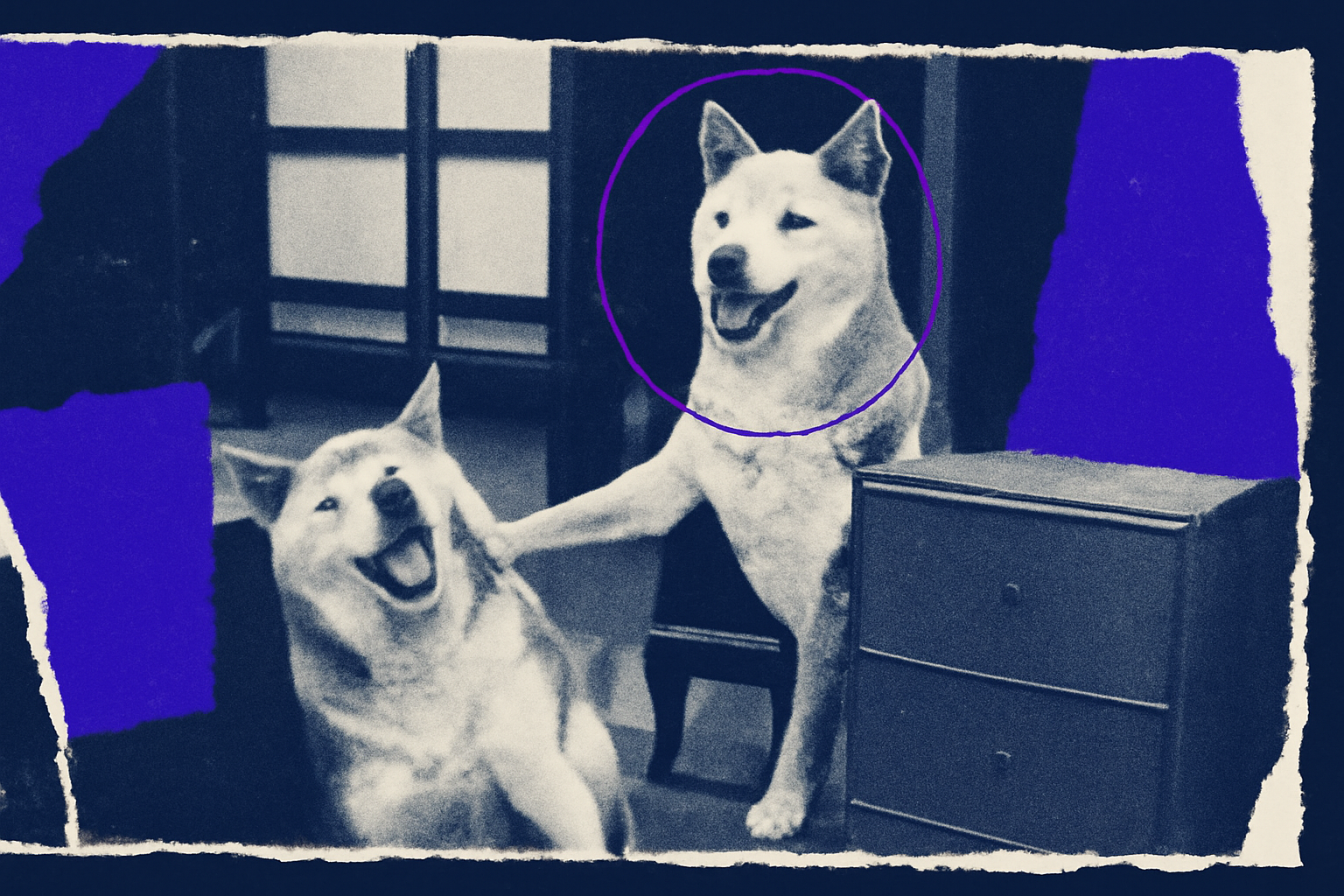
AI Innovations Transforming Work, Creativity, Shopping, and Communication | #DaNews
Microsoft's Copilot Just Got a Superpower: Photorealistic Image Generation Like ChatGPT!

Microsoft is upgrading its AI assistant, Copilot, to generate stunning photorealistic images powered by the latest GPT-4o multimodal model — surpassing older tools like Microsoft Designer and Bing Image Creator. Now users can create everything from personalized action figures to Studio Ghibli-style animations simply by describing what they want, with enhanced editing capabilities, improved realism, and smarter prompt handling. This major update promises a seamless creative experience that unleashes your imagination directly from the Copilot interface.
By integrating OpenAI’s cutting-edge image generation technology, Microsoft is positioning Copilot as a powerhouse AI assistant, enabling faster and more accurate visual content creation. Although the feature is rolling out gradually and not yet available for all accounts, it signals a new era where AI-generated images become a core tool for creativity, marketing, and content production. Users benefit from the ability to transform styles, edit multiple images easily, and produce highly detailed, realistic visuals with fewer misfires.
This breakthrough presents an exciting opportunity for entrepreneurs to capitalize on AI-driven content creation. By integrating advanced, photorealistic AI image generation into products and services, startups can offer unique, scalable creative tools for industries like advertising, gaming, design, and entertainment. Entrepreneurs should focus on building platforms that harness these AI capabilities to reduce costs and speed up production cycles, enabling businesses to innovate faster. As AI-generated content becomes mainstream, companies that leverage these tools effectively will have a significant competitive advantage in creativity and customer engagement.
Source:
Barbera, D. (2025, May 16). Copilot can now generate photorealistic images like ChatGPT. WIRED Italia.
DeepMind’s AI Scientist Designs Chips Better Than Humans —Is This the End of Human Innovation?

DeepMind has unveiled a groundbreaking AI system called AlphaEvolve that outperforms humans in designing algorithms crucial for chip design, data center programming, and optimizing large language models. By combining its Gemini AI model’s coding skills with an evolutionary approach, AlphaEvolve created new, more efficient algorithms, including improvements on the decades-old Strassen matrix multiplication method. This breakthrough demonstrates that AI is no longer just remixing existing knowledge but generating truly novel solutions that can revolutionize critical technology sectors.
AlphaEvolve’s success signals a new era where AI-driven innovation accelerates beyond human limits, transforming software development and scientific research. While current applications focus on problems involving complex search spaces, the underlying methods could expand to broader scientific challenges, potentially speeding up technological progress on a massive scale. Experts highlight that such AI systems open up unprecedented opportunities for human-machine collaboration, with AI augmenting human creativity and efficiency in research, design, and problem-solving.
For entrepreneurs, AlphaEvolve’s advancements highlight a critical shift—AI is moving from assisting tasks to innovating autonomously, unlocking new business models in AI-driven research, software automation, and hardware design. Startups that embrace AI’s ability to generate original ideas can gain competitive advantages in industries like semiconductor design, cloud computing, and AI development platforms. The future belongs to ventures that integrate intelligent AI agents capable of continuous learning and creative problem-solving, opening pathways to scalable innovation and disruptive technologies.
Source: Knight, W. (2025, May 15). DeepMind introduces a scientific AI that designs chips better than humans. WIRED. https://es.wired.com/articulos/deepmind-presenta-una-ia-cientifica-que-ya-disena-chips-mejor-que-los-humanos
AI Sign Language Avatars Are Here— And They’re About to Revolutionize Communication for the Deaf!
![]()
A UK startup, Silence Speaks, is breaking barriers with AI-powered avatars that translate text into sign language, providing deaf and hard-of-hearing people with an interpreter in their pocket. This innovative technology accurately captures regional dialects, contextual language, and emotional tone, offering a far richer communication experience than simple translation. With over 70 million sign language users worldwide and a dire shortage of interpreters, this AI solution promises to transform accessibility in noisy, busy environments like hospitals, schools, and public transport.
Silence Speaks’ AI avatars have already garnered interest from major agencies like Transport for London to improve metro accessibility. The company is also enabling businesses to create custom avatars—whether photorealistic or cartoon-style—to serve various communication needs. With backing from leaders in science and government, Silence Speaks is poised to expand accessibility in education and workplaces, tackling exclusion and opening new opportunities for deaf communities worldwide.
This emerging AI sign language technology offers a prime opportunity for entrepreneurs to innovate in accessibility and inclusive tech markets. By developing customizable AI avatars and expanding multilingual sign language support, startups can address massive underserved communities globally. Beyond social impact, entrepreneurs can explore partnerships with public agencies, educational institutions, and private sectors to integrate this tech into real-world environments. Emphasizing authenticity and community involvement—as Silence Speaks does—will be key to user adoption and long-term success. Inclusive AI is not just a moral imperative; it’s a business frontier rich with opportunity.
Source: Hill, S. (2025, May 11). AI sign language avatars are already here thanks to this startup. WIRED. https://es.wired.com/articulos/los-avatares-de-lengua-de-senas-con-ia-ya-estan-aqui-gracias-a-esta-startup
Pope Leo XIV Shocks the World: AI Named as a Catalyst for a New Industrial Revolution!

Pope Leo XIV has made a stunning declaration linking his papal name to the transformative force of artificial intelligence. Drawing parallels to Pope Leo XIII, who led the church through the dawn of the industrial revolution, Pope Leo XIV stated that AI represents a modern revolution posing profound challenges to human dignity, justice, and labor. This unprecedented acknowledgment by a religious leader signals that AI will be a central focus for the church’s ethical and social guidance in the years to come.
The Catholic Church has already shown growing interest in AI’s ethical implications, with Pope Francis warning about the dangers of false narratives created by AI. Pope Leo XIV’s choice of name reflects a commitment to addressing the societal impacts of AI with the same gravity as past industrial upheavals. His papacy may usher in a new era of dialogue between faith, technology, and humanity’s evolving relationship with AI-driven change.
The papal recognition of AI as a revolutionary force underscores its profound influence beyond tech circles—touching ethics, society, and global institutions. Entrepreneurs should see this as a call to integrate ethical considerations into AI development and deployment. Building AI solutions that respect human dignity, fairness, and social justice will not only align with emerging global values but also create competitive advantages in increasingly conscientious markets. Innovators who prioritize ethical AI and social impact will lead the way in shaping the future of technology and its role in society.
Source:
Davis, W. (2025, May 10). Pope Leo XIV names AI one of the reasons for his papal name. The Verge. https://www.theverge.com/news/664719/pope-leo-xiv-artificial-intelligence-concerns
TikTok’s AI Magic:Turn Your Photos Into Stunning Videos—But Is It Too Powerful?

TikTok has launched AI Alive, a groundbreaking AI feature that transforms static photos into dynamic, animated videos using simple text prompts directly within TikTok Stories. This tool lets users effortlessly create captivating clips enriched with atmospheric effects, movement, and soundscapes—even bringing group selfies to life by emphasizing gestures and expressions. The feature is designed to be accessible to all users, regardless of experience, and TikTok has integrated robust safety measures including content moderation and visible AI-generated content labels to ensure responsible use.
Behind the scenes, TikTok’s parent company ByteDance continues to push AI boundaries with OmniHuman-1, a sophisticated model capable of generating hyperrealistic full-body videos from a single image. Although not yet public due to its high costs, this technology has stirred concerns about deepfakes and misinformation. To combat misuse, TikTok incorporates Content Credentials metadata to help users identify AI-generated content, reinforcing transparency as it expands AI-powered creative tools.
TikTok’s AI Alive exemplifies how AI can democratize creative content production, opening new doors for entrepreneurs in media, marketing, and app development. Businesses can leverage similar AI-powered tools to create engaging video content quickly and cost-effectively, enhancing social media strategies and customer engagement. The rise of AI-generated media also highlights the critical need for solutions focused on content verification and digital trust—key areas for startups aiming to innovate responsibly in the AI ecosystem. Staying ahead with AI-powered creativity and ethical tech will be essential for entrepreneurs looking to thrive in the evolving digital landscape.
Source:
González, F. (2025, May 14). TikTok launches new AI tool to turn photos into videos. WIRED. https://es.wired.com/articulos/tiktok-lanza-nueva-herramienta-ia-transformar-fotos-en-videos

